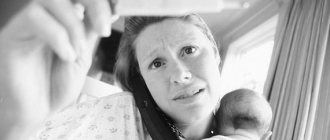Many people give social phobia a romantic or mysterious aura, perceive it as something funny, as a character trait, and not a disease. However, this condition is very common (it is the third most common mental disorder after major depressive disorder and alcoholism), is chronic and can provoke other serious diseases. It has a destructive effect on a person’s life: it limits his intellectual and professional development, his personal life, and leads to the emergence of addictions.
Research shows that social phobia increases the risk of subsequent development of depression by 3–3.5 times, and suicide attempts in people under 24 years of age by 6 times. Children with this diagnosis are significantly more likely to drop out of school. In the United States, 70% of people with this mental disorder have a low socioeconomic status, and 22% are unemployed.
Social phobes are less likely to start families and do not fulfill their need for relationships. But emotional closeness and contact with family and friends prevent the development of the disease.
about the charm of social phobia are wrong: this disorder never gives a person uniqueness, on the contrary, it forces this uniqueness to be hidden. Social phobia, like any anxiety disorder, is a pathological condition that greatly interferes with life.
A social phobe is often called a person who is not interested in communication and therefore does not strive for it. In reality, a social phobe greatly needs contact with other people, but is very afraid that everything will turn out badly, and fences himself off from people not as something annoying, but as alluring, but unattainable. This is not a nice, modest guy who prefers to remain silent. Modesty is a character trait, and such a person takes longer to adapt to the situation and communicates less intensively, but this is not a problem. But for people with social anxiety, communication is a problem.
How my hand trembles: how social phobia differs from shyness
Social anxiety arises from the fear that others will not accept us. It is absolutely natural for all people: it is part of the fundamental biological human need to be loved. Psychological disorder begins when anxiety begins to greatly influence a person's behavior.
The difficulty is that it is impossible to accurately measure how much anxiety affects life - today more, yesterday less. It is especially difficult to determine this impact if the person has lived with the condition almost always. There is no standard for an acceptable level of social anxiety in certain situations. Is body trembling while speaking in front of colleagues normal or is it too much? What about the complete inability to talk to the person you like? Answer a simple question to the cashier?
People with phobic anxiety disorder develop a fear of situations that are not dangerous. This usually leads to the person beginning to systematically avoid these situations. So a social phobe refuses a number of social activities - for example, he may stop eating in public, using a public toilet, talking on the phone, going on dates or making friends. A person may oppose a wedding not only because he is afraid to start a relationship, but also because he is afraid to go to an event where he will be the center of attention. Many people with this disorder are very afraid of speaking in public.
Social phobia is called the disease of missed opportunities.
However, social phobics are not necessarily shy. Shyness is only one manifestation of the disorder; but different behavior patterns are possible. Such a person may give the impression of being touchy, gloomy, irritable, or, trying to hide his fears, he may act like a cheerful person who strives to please everyone.
Signs
What does social phobia mean? This means that the person avoids social interaction at all costs. He refuses to make new acquaintances, work in a team, build a personal life, and establish business connections. A person withdraws into himself; in particularly advanced cases, he isolates himself within the walls of his home. The same question repeats in his head: “What will people say?” A social phobe is afraid of negative evaluation of his actions and the negative consequences of social interaction.
Characteristics of a social phobe:
- irritability,
- shyness,
- suspiciousness,
- touchiness,
- awkwardness in movements,
- fussiness,
- gloominess.
If a social phobe hears that someone is laughing next to him, then he is sure that they are laughing at him. If someone is discussing something, then the social phobe is sure that they are discussing him, and exclusively in a negative way. If a social phobe catches someone’s gaze on him, the thought immediately appears in his head: “What’s wrong with me?”
The signs and symptoms of social phobia are virtually the same in adolescents and adults. The only difference is in the situations where it is noticeable. For example, teenage children experience difficulties at school and refuse to attend an educational institution (truant or complain of poor health). Otherwise, the manifestations in children and adults are similar: quiet and timid speech, redness of the face, fear of saying the wrong thing. The signs of social phobia do not differ between women and men.
Interesting! There are three behavioral patterns of a social phobe: stupor during social interaction, the desire to run away or hide, aggression and deliberate disregard for any social interaction.
What is a social phobe afraid of?
With social phobia, there are four main fears: being judged by others, being humiliated or disgraced, accidentally offending someone else, and being the center of attention.
A social phobe may realize that his fears are excessive and unreasonable, but this does not make it any easier to overcome them.
Manifestations of the disorder are divided into three groups: cognitive, behavioral and physiological.
Cognitive manifestations:
- tendency to see oneself in a bad light
- horror from the gaze of other people,
- constant focus on yourself,
- disturbances in concentration,
- inflated demands on oneself.
Physiological manifestations:
- shiver,
- lack of coordination
- nausea,
- difficulty breathing,
- sweating,
- muscle tension,
- redness or paleness of the skin.
Behavioral:
- fussiness,
- shyness,
- avoiding contact with people,
- desire to run away, hide, etc.
Social phobia manifests itself quite early, on average at 11 years of age. Such children are clearly uncomfortable communicating with teachers or classmates; they avoid eye contact, speak very quietly and unintelligibly, and blush or shake when communicating. They are often afraid of saying something “stupid” or appearing funny.
Children with social phobia may pretend to be sick to avoid activities and try to spend a lot of time at home. These seemingly innocent actions may indicate that the child is developing psychological attitudes that will greatly complicate his life in the future.
Each patient will have their own manifestations, and they do not necessarily have to be many. Based on this principle, there are two types of social phobia:
- generalized - a person is very afraid of many social situations (or even all). As a rule, this form of social phobia affects a person comprehensively, its consequences are more severe, and treatment is more difficult.
- specific - a person is afraid only of certain situations, and there are few options for the manifestation of anxiety. For example, social phobia can only manifest itself when communicating with a hint of romance, during which a person’s hands begin to shake uncontrollably, an obsessive desire to escape appears, and all attention is focused on these reactions.
Pathogenesis
There are several theories about the pathogenesis of social phobia.
- The author of the psychoanalytic theory is Sigmund Freud, who argued that phobias are the result of too strong a psychological defense to control anxiety. Control is carried out through psychological defense mechanisms - repression and transference. Repression occurs when anxiety-provoking signals are pushed deep into the unconscious. Transference – fear is transferred to those situations and objects that are easily controlled. But this theory was not further developed.
- There is also a behaviorist theory that states that fear of situations and events is formed through classical conditioning. Even after a person experiences such a feeling once, he begins to avoid certain objects and situations and does not control his fear.
As for the characteristics of nervous activity in social phobia, scientists have confirmed that this disorder is associated with a lack of certain neurotransmitters and an imbalance in them.
Why does social phobia appear?
As is the case with other mental illnesses and disorders, social phobia can be triggered by psychological trauma, instilled norms of behavior, and heredity. Since social phobia usually manifests itself early, its origins should also be sought in childhood. This could be a traumatic experience, a blow to self-esteem, fear of anticipation, overprotective or rejecting parents, and even heredity.
Traumatic experience
Triggers for social phobia can include bullying, domestic violence, humiliation, or long-term rejection by peers.
70% of patients with general social phobia surveyed reported that they had been exposed to at least one type of violence in childhood.
46.2% of respondents said that they experienced violence from a relative at an early age (for comparison: in the control group of people without anxiety disorders, this figure was 16.5 times lower).
A blow to self-esteem
How are anxiety reactions formed in situations that are not dangerous in themselves? In a certain situation, a person receives a low assessment from those around him who are significant to him. Circumstances change, but the person continues to perceive others as a threat to self-esteem. A persistent fear is formed that in a similar situation people will speak out in the same negative way. A researcher on the condition, Scott Stossel, described anxiety as “a premonition of future suffering, a frightening premonition of an unbearable catastrophe that there is no hope of preventing.”
Fear of waiting
Social phobia grows when there is a conflict of needs and opportunities: I want to communicate, but for some reason I can’t. This chain closes:
a person is afraid that he will not be able to perform a social action that is important to him ↓ because of fear he really cannot do it ↓ he is even more afraid
Frustration increases - suffering due to the inability to get what you want. This contributes to the development of depression due to unmet important social and biological needs.
Psychiatrist Viktor Frankl described the mechanics of phobia development as follows:
“A symptom causes the patient to fear that it may happen again, and with this comes a fear of anticipation (phobia), which leads to the fact that the symptom actually appears again, which only increases the patient’s original fears.”
Overprotective or rejecting parents
Parents can play a significant role in the formation of social phobia if they instill in their child the extreme importance of external positive evaluations and fixation on themselves. Overprotection in the family or, conversely, rejecting behavior can also have an impact. In addition, researchers have found a relationship between socially anxious, avoidant behavior of parents and the development of social phobia in children.
Heredity
Social phobia can be caused not only by external factors, but also by physiological ones:
- anatomical features of the brain - the structure of the prefrontal cortex, increased sensitivity of the amygdala and hypothalamus (these are areas associated with the formation of anxiety and fear);
- genetic - similar chromosome features were found in people with anxiety and panic disorders.
Heredity increases the likelihood of developing not only social phobia, but also any anxiety or depressive disorder, but, according to various estimates, it is no more than 25–50%.
Six steps to overcome social phobia
How to overcome social phobia? To overcome social phobia on your own, use a simple 6-step program (social phobia, way to overcome).
Relaxation
Anxiety is the result of self-hypnosis. By playing out negative scenarios of an upcoming event, you instill in yourself an attitude of anxiety and anticipation of danger directly during the event. Train yourself to think about the upcoming event at a time when you are in a relaxed state. Take a warm bath, light aromatic candles, achieve a calm and confident state. In this state, think about the upcoming event. Practice this as often as possible, soon a stable connection will be formed in your mind between a relaxed state, self-confidence and an exciting event.
Search for social phobic situations
The more you avoid something, the more dangerous it seems to your psyche. Therefore, stop avoiding frightening situations, consciously look for them, immerse yourself in them, imagine what worries you. Don't forget to relax beforehand.
Look around
A social phobe is obsessed with himself and self-control. Learn to notice what is happening around you and concentrate on the little things. For example, consider the color of the walls, people's clothes, paintings that hang on the walls
If you feel that you are blushing or sweating, then try to switch your attention. The more you think, “I need to calm down,” the more worried you become.
Ask questions
Learn to be interested in people, to switch attention from your inner world to the inner world of other people. Ask them questions that require a detailed answer.
Listen carefully to the interlocutor, clarify something, ask additional questions, express your interest in the interlocutor.
Stop beating yourself up
Imagination is the enemy of a social phobe. The man is intimidating himself. For some reason he is sure that he can read people's thoughts. Every time you catch yourself trying to guess other people’s thoughts, say: “I actually don’t know what this person is thinking about me right now, or what people are thinking about me.”
Keep a positive attitude
Think about what thoughts you usually have when going into an exciting meeting. If you're thinking, "I hope I don't feel like I always do," that's completely wrong. But if you say “I feel great, I’m confident in myself,” this will create a positive attitude. Remember a situation in which you felt confident, remember this state, transfer it to the situation that is scary now.
Be yourself
The problem with a social phobe is that he does not accept himself, does not allow himself to be himself. Allow yourself to be imperfect, not like others, not what someone supposedly wants you to be. Play the role of a jester, allow yourself to be ridiculous and funny. This will give you confidence and allow you to relax. Practice in front of the mirror every day, then ask your friends to become your spectators.
Why is social phobia often combined with other diagnoses?
All anxiety disorders are highly comorbid, that is, a person can simultaneously have several disorders that are pathogenetically related.
90% of social phobics have at least one other psychiatric diagnosis. Typically, social anxiety disorder appears first.
The most common accompaniments of social phobia are major depressive disorder (41.8%), panic disorders (5.5%), post-traumatic syndrome (5.4%), as well as alcoholism (48%) and drug addiction (18%). ). 25% of people with a first episode of psychosis have social phobia. In young people, addictions combined with social phobia are much more common - according to some data, in 85.2% of cases.
Comorbid disorders respond less well to treatment. For example, depression and bipolar disorder take longer to treat and are less effective if the patient also has an anxiety disorder.
The manifestations of anxiety disorders may change over time - from natural causes (chronic illness, other diseases in the background) or due to medication, incomplete or inadequate treatment. A person may begin to be afraid of something else, become suspicious, the symptoms of the underlying disorder become stronger and stronger, and it may become chronic and resistant to therapy.
Possible reasons and prerequisites
As I already mentioned, the development of social phobia is influenced by external and internal factors. Yes, even your own insecurity or anxiety is the result of outside influence (in childhood or adulthood). The following prerequisites for the emergence of social phobia can be identified.
- Depression (70.9% of cases) or other disorders.
- Drug addiction, alcoholism (76.7%). Public condemnation can be received more often than support and help, which forces the alcoholic to withdraw into himself, increasingly avoiding society.
- Experienced situations of failure. Having once "shitted" in public, a person will probably avoid performing again.
- Properties of the psyche. Accented individuals, that is, with a pronounced character trait, are more prone to phobias. For example, the schizoid and asthenic type are the most vulnerable. The same dependence is observed among temperament types. Choleric and melancholic people are more prone to phobias.
- Someone else's experience. Often, sophiophobia begins to form in childhood and is caused by the behavior (example) of parents or parenting style. For example, intimidation, prohibitions, or one’s own experience of failure in front of a child.
- Low self-esteem and uncertainty that arose against the background of social deprivation (deprivation) in childhood. This group includes a tyrannical type of parental education, an authoritarian teacher, and “bullying” in the classroom.
- Low self-esteem. Often comes from a destructive type of parental upbringing or school childhood.
Social phobia is a disease of developed countries
Social phobia is distributed very unevenly in different parts of the world. Research shows that in Western countries, 7–13% of people experience social phobia at least once in their lives, with the United States leading in the number of cases (12–13% of the population).
Social phobia is much more common in developed countries than in developing countries. In 2021, scientists surveyed 142 thousand respondents from 26 countries, 13 of which had a high standard of living, 7 - average, 6 - below average or low.
Countries with low living standards (Africa and the Eastern Mediterranean) had significantly fewer social phobics than countries where people earned a lot (North America and the Western Pacific).
On average, people experience social phobia during their lifetime:
- in high-income countries - 5.5% of the population,
- in countries with upper middle income - 2.9%,
- in low-income countries - 1.6%.
Stefan Hoffman, director of the Laboratory of Psychotherapy and Emotion Research at Boston University, believes that the prevalence of social phobia also depends on the type of society - collectivist or individualistic. Where the individual is less likely to be the center of attention, social anxiety tends to be less pronounced than in cultures that emphasize the uniqueness of everyone.
This is confirmed by the figures in the study mentioned above: in China, social phobia manifests itself throughout life in 0.5% of people, and in the USA - in 12.1%.
Diet
Diet for the nervous system
- Efficacy: therapeutic effect after 2 months
- Timing: constantly
- Cost of food: 1700-1800 rubles per week
Nutrition should be rational, nutritious, and contain foods and dishes that are beneficial to the nervous system.
There is scientific evidence that consuming fermented foods that contain probiotics . They have a positive effect on intestinal microflora , which, in turn, affects the body’s perception of stressful situations. It is recommended to include in the diet:
- yoghurts, fermented milk products;
- soy milk;
- sauerkraut;
- seaweed;
- black chocolate.
It is important to completely avoid alcoholic beverages.
An Unidentified Disorder: Why Social Phobia Is Rarely Diagnosed
Scientists have calculated that, on average, social phobia lasts almost 23 years. Although it seriously affects all aspects of life, only about 20% of sufferers seek professional help, and usually only 15–20 years after the onset of symptoms. Less than 5% of people go to the doctor during the first year.
Often, such people consider social phobia to be a part of their personality that cannot be changed, or they look for the root cause of physiological symptoms.
Many children and teenagers are convinced that they will gradually outgrow this condition, but this is usually a misconception.
Social phobia is detected late and for other reasons:
- specialists do not always make the correct diagnosis;
- psychological help is stigmatized;
- the patient is afraid of being assessed by doctors;
- there is little information about effective treatment for social phobia;
- There are not enough therapeutic services.
Very often, social phobia is not diagnosed at all, and the person lives with this disorder all his life.
After the first manifestations of a phobia, a person (usually a child) subconsciously or consciously trains himself to avoid situations in which he becomes the center of attention and experiences severe anxiety. Due to this, the disorder is not so traumatic, but for the same reason it is less diagnosed. A person simply gets used to living with social phobia - to the detriment of self-realization.
Seeking help is also a social situation that the patient may avoid. Therefore, the disorder is often discovered when a person begins to treat a concomitant psychological condition that is more difficult not to recognize: addiction, panic attacks, depression.
If you think you may have social anxiety, take a test
to determine the level of social anxiety (Liebowitz scale).
Prevention
As primary methods of prevention, it is recommended to follow the following rules:
- Try to avoid serious stressful situations and increase stress resistance.
- Develop communication skills.
- Raising children correctly: avoiding excessive care and harsh criticism.
- Lead a healthy and active lifestyle.
As for how to prevent a relapse of this condition, it is important for a person to follow all the doctor’s advice, attend psychotherapy sessions, and not drink alcohol or drugs.
Why face fear: therapy for social phobics
Social phobia is a chronic disease with a high risk of relapse. A Harvard University study confirms that it is also one of the most persistent mental disorders.
Scientists observed for 12 years how anxiety and affective disorders developed in 711 patients. At the start of the study, participants had remained diagnosed for an average of 19 years. Without treatment, 37% of participants recovered from social phobia during the experiment—this was the lowest rate among other mental illnesses studied. For comparison, generalized anxiety disorder went away on its own in 58% of participants, major depressive disorder in 75%, and panic disorder in 82%. However, with regular and long-term help, social phobia is highly treatable.
The disorder is based on a lack of social support and experience, and this cannot be compensated for with drugs alone.
At the same time, any psychotherapeutic practices are very effective: when a person discusses with a specialist for a long time what is bothering him, he feels better.
The task of a psychotherapist in the treatment of social phobia is to help the patient correct their dysfunctional thinking styles and irrational attitudes (for example, that failures in communication are inevitable) and learn to cope with traumatic situations. Due to this, a person should regain his self-esteem and develop the correct attitude towards the reactions of others. As a result, he will also get rid of the physiological manifestations of social phobia.
One of the most effective methods of treating social phobia is the cognitive-behavioral approach. This is the name given to a group of psychotherapy methods that are designed to change a person’s thoughts and/or behavior. It is believed that maladaptive behavior is often associated with a way of thinking and, if you change your thinking, you can influence problematic reactions.
In children
Social phobia in children may initially manifest itself as crying and tantrums. When communicating with other people, children often remain silent and withdraw into themselves. Later, they may demonstrate avoidant behavior - refusing to attend school, public events, parties. They often motivate this with health complaints - for example, a child may say that he has a headache or a stomach ache.
Teenagers with this disorder often show severe anxiety before events, are afraid to answer in class, and prepare intensely before speaking in a regular lesson.
If the condition worsens, the child may refuse to leave the house or even talk on the phone.
In such situations, it is important to consult a doctor in time and establish the correct diagnosis. If the presence of a disorder in a child is confirmed, behavioral therapy is carried out, and if necessary, the doctor prescribes a course of medications.
At the same time, parents should pay special attention to the correct line of behavior with such a child. Specialized websites, forums, chats will help you find out about this - for example, the chat about social phobia “Chatovod”, the video series “Goodbye social phobia!” and etc.
List of sources
- Barlow D. Clinical Guide to Mental Disorders / 3rd ed. - St. Petersburg: Peter, 2008. - 912 p.
- Wittchen G.-U. Encyclopedia of mental health / Trans. with him. AND I. Sapozhnikova, E.L. Gushansky. - Moscow: Aletheia, 2006. - 552 p. — (Humanistic psychiatry).
- Zalevsky, G.V. Fixed forms of behavior of individual and group systems (in culture, education, science, norm and pathology) / GV. Zalewski. - M.; Tomsk, 2004.
- Sagalakova O.A., Truevtsev D.V. Social fears and social phobias. - Tomsk: Publishing house Tom. University, 2007. - 210 p.
Definition of the concept
A social phobe is a person who experiences an inexplicable fear of various types of social interaction. Depending on the severity of social phobia, fear can be very strong and uncontrollable, or quite tolerable, but unpleasant. Naturally, such fear leaves a serious imprint on all areas of a person’s life, seriously reducing its quality. Therefore, social phobia is considered a pathological condition bordering on neurosis.
In addition, social phobia often provokes the development of other mental disorders, such as:
- depression;
- anxiety disorder;
- obsessive-compulsive disorder.
According to experts, social phobia affects from 2 to 13% of the world's population. This disease is more common among residents of developed countries, because higher requirements for success are initially set there. Women are more susceptible to this disorder, because by nature they are more impressionable and emotional.
Interesting tests
Test for knowledge of phraseological units
Evaluate the richness of your speech by taking a test on your knowledge of phraseological units.
Test for knowledge of the capitals of the countries of the world
Guess the names of the capitals of different countries of the world.
Test for knowledge of Russian history
How well do you know the history of Russia?
Test for knowledge of authors of literary works
Those who like to read fiction will not find the test difficult.
The dangers of social phobia
Social phobia can only conditionally be called a fear of society. When taken more seriously, this disorder does not mean a fear of people as such, but a fear of certain life situations in which the individual will find himself in the public eye. In these circumstances, the social phobe experiences a pronounced fear that he will certainly find himself in a humiliating or shameful position.
And then social phobia manifests itself with many very unpleasant symptoms: anxiety, panic, rapid heartbeat, increased blood pressure, impaired breathing, dizziness, stuttering, nausea, trembling hands, increased sweating. A person may experience redness of the skin of the face and neck, dry mouth, muscle tension, and may feel internal stiffness. The patient's condition may be aggravated by a feeling of unreality of what is happening.
If social phobia is not overcome, then against its background there is a high probability of developing other diseases. Firstly, there are various mental disorders: depressive, anxiety, anorexia, bulimia, panic attacks. The desire to stop attacks of fear with alcohol-containing drinks often leads to the development of alcoholism. The combination of social phobia with other diseases greatly increases the risk of suicidal episodes.
Secondly, the increased levels of adrenaline and cortisol secreted by the adrenal glands during an attack of fear increase the activity of the autonomic system. Long-term increased activity of the autonomic nervous system can provoke the development of hormonal diseases, gastritis, peptic ulcers, ulcerative colitis, heart attack, stroke and other somatic diseases.











